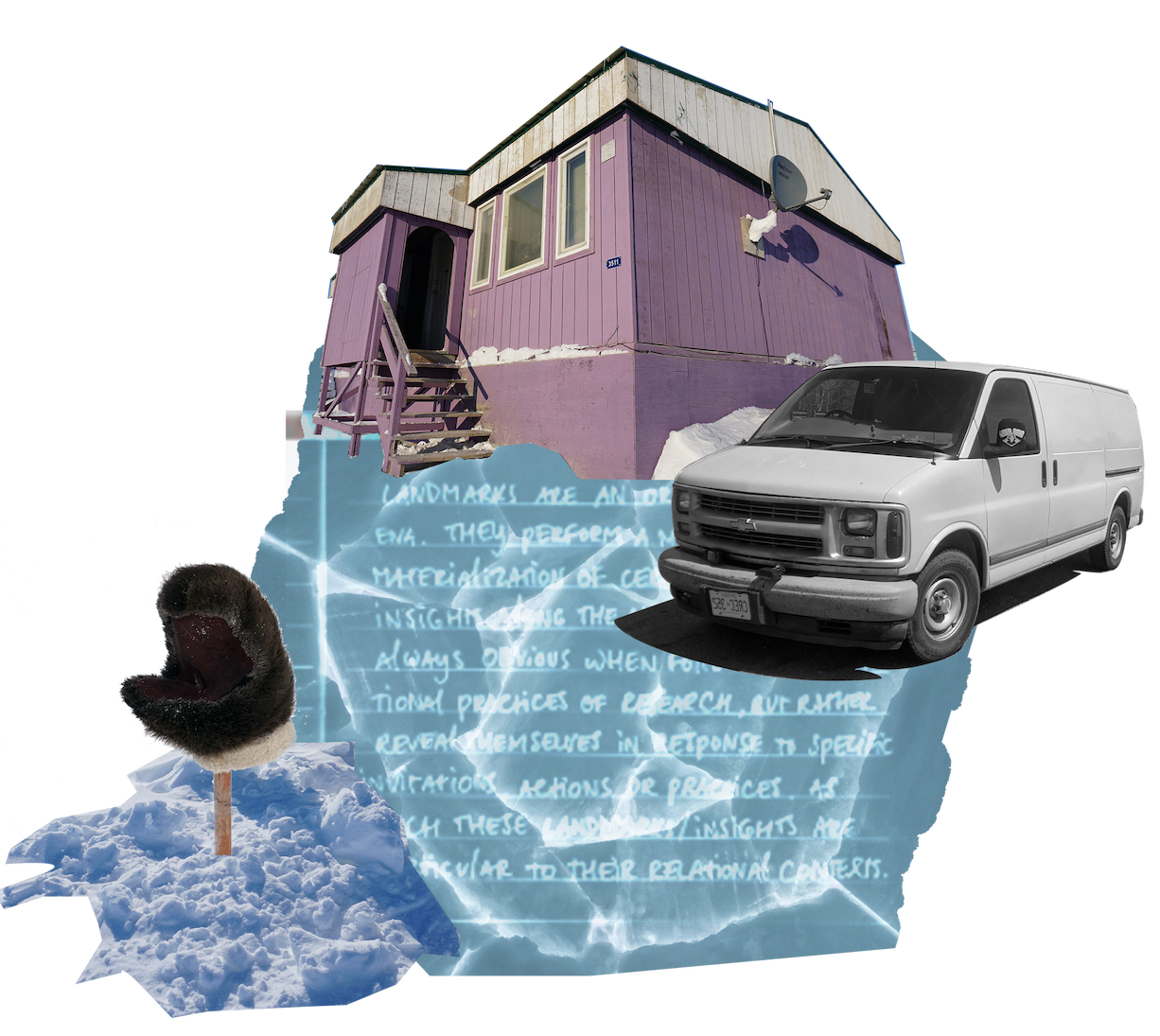The Wreck-site: Difference between revisions
No edit summary |
No edit summary |
||
| (4 intermediate revisions by 2 users not shown) | |||
| Line 1: | Line 1: | ||
[[File:Landmark.png|thumb]] | [[File:Landmark small.png|thumb]] | ||
The Wrecksite as a figuration to think with emerges from the existing wrecks of HMS Terror and Erebus, in the vicinity of Gjoa Haven: material traces of long-standing Inuit-Qablunaat (non-Inuit) encounters. | |||
These sites are not static ruins but | These sites are not static ruins but spaces where history, knowledge, and materiality continue to create meaning and matter. | ||
Research as a wreck-site is not just about what is uncovered, but how research itself becomes a contested space, claimed, studied, and sometimes fought over. Shaped by seasonal forces as shifting ice and weather limit access, altering what can be seen, gathered, or known, it also becomes a foundations for new growth. | |||
My research is both a site of "becoming reef," opening new relational possibilities, as it is part of becoming research "heritage"- shaped by layered histories and ongoing transformation. | |||
My research is both a site of "becoming reef," opening new relational possibilities, as it is part of becoming research "heritage | |||
<span class="return to cut 3 link" data-page-title="Fall 2022 Gjoa Haven" data-section-id="3" data-encounter-type="return">[[Fall 2022 Gjoa Haven#Another Point of Beginning|Return to: "Another Point of Beginning"]]</span> | <span class="return to cut 3 link" data-page-title="Fall 2022 Gjoa Haven" data-section-id="3" data-encounter-type="return">[[Fall 2022 Gjoa Haven#Another Point of Beginning|Return to: "Another Point of Beginning"]]</span> | ||
Latest revision as of 12:44, 18 July 2025

The Wrecksite as a figuration to think with emerges from the existing wrecks of HMS Terror and Erebus, in the vicinity of Gjoa Haven: material traces of long-standing Inuit-Qablunaat (non-Inuit) encounters.
These sites are not static ruins but spaces where history, knowledge, and materiality continue to create meaning and matter.
Research as a wreck-site is not just about what is uncovered, but how research itself becomes a contested space, claimed, studied, and sometimes fought over. Shaped by seasonal forces as shifting ice and weather limit access, altering what can be seen, gathered, or known, it also becomes a foundations for new growth.
My research is both a site of "becoming reef," opening new relational possibilities, as it is part of becoming research "heritage"- shaped by layered histories and ongoing transformation.
